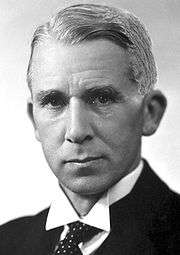Please tell us which country and city you'd like to see the weather in.

Norman Haworth
Sir (Walter) Norman Haworth FRS. (19 March 1883, White Coppice,Chorley, Lancashire – 19 March 1950, Barnt Green, Worcestershire) was a British chemist best known for his groundbreaking work on ascorbic acid (vitamin C) while working at the University of Birmingham. He received the 1937 Nobel Prize in Chemistry "for his investigations on carbohydrates and vitamin C". The prize was shared with Swiss chemist Paul Karrer for his work on other vitamins.
Haworth worked out the correct structure of a number of sugars, and is known among organic chemists for his development of the Haworth projection that translates three-dimensional sugar structures into convenient two-dimensional graphical form.
Academic career
Having worked for some time from the age of fourteen in the local Ryland's linoleum factory managed by his father, he studied for and successfully passed the entrance examination to the University of Manchester in 1903 to study chemistry. He made this pursuit in spite of active discouragement by his parents. He gained his first-class honors degree in 1906. After gaining his master's degree under William Henry Perkin, Jr., he was awarded an 1851 Research Fellowship from the Royal Commission for the Exhibition of 1851 and studied at the University of Göttingen earning his PhD degree in Otto Wallach's laboratory after only one year of study. A D.Sc. degree from the University of Manchester followed in 1911, after which he served a short time at the Imperial College of Science and Technology as Senior Demonstrator in Chemistry.

Haworth
Coordinates: 53°50′N 1°58′W / 53.83°N 1.96°W / 53.83; -1.96
Haworth is a village in West Yorkshire, England, in the Pennines 3 miles (5 km) southwest of Keighley, 10 miles (16 km) west of Bradford and 10 miles (16 km) east of Colne in Lancashire. The surrounding areas include Oakworth and Oxenhope. Nearby villages include Cross Roads, Stanbury and Lumbfoot.
Haworth is a tourist destination known for its association with the Brontë sisters and the preserved heritage Keighley and Worth Valley Railway.
History
Haworth is first mentioned as a settlement in 1209. The name may refer to a "hedged enclosure" or "hawthorn enclosure". The name was recorded as "Howorth" on a 1771 map.
Governance
Haworth is part of the parish of Haworth, Cross Roads and Stanbury, which in turn is part of the Bradford Metropolitan District Council, one of the five metropolitan boroughs of West Yorkshire.
Geography
Haworth is in the Worth Valley amid the Pennines. It is 212 miles (341 km) north of London, 43 miles (69 km) west of York and 9 miles (14 km) west of Bradford.

Haworth (crater)
Haworth is an impact crater that lies at the south pole of the Moon. The crater is named after Walter Haworth.
Description
The crater was imaged by Diviner. Cabeus Crater is nearby.
See also
References
External links
Haworth (disambiguation)
Haworth is a village and tourist attraction in the English county of West Yorkshire, best known for its association with the Brontë sisters.
Haworth may also refer to:
Places
Businesses
Other uses
See also
Radio Stations - Haworth
SEARCH FOR RADIOS
Podcasts:

